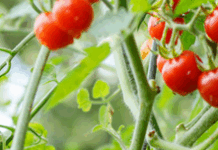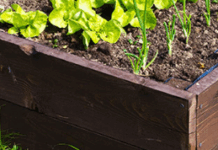Iron chlorosis due to high pH soils is a significant problem in Kansas. Though Kansas soils normally contain adequate amounts of iron, a high pH makes that iron unavailable to the plant. Iron plays a major role in the production of chlorophyll. Thus, a lack of iron reduces the amount of chlorophyll and results in yellowing of leaves. Iron chlorosis weakens, and in severe cases, may kill a susceptible plant.
A popular recommendation for high pH soils is adding sulfur to lower pH. This works well for many soils, but not those that are calcareous. Calcareous soils are those that contain actual particles of calcium carbonate (limestone). Calcareous soils can be difficult to practically impossible to acidify because the sulfur must neutralize all the free limestone before the pH is affected long term. In many cases you would need well over a pound of sulfur per square foot just to neutralize the free lime.
So, what do you do? That depends on the situation. With vegetable gardens and annual flowerbeds, work products into the soil during the time of year when there are no plants present. Oregon State University suggests mixing 5 pounds of sulfur per 100 square feet into the soil before planting. The idea is to form little pockets of acidity that result in enough iron availability for the plants during the year of application. Note that this must be done each year. Another possibility is to use iron chelates. Iron chelates hold the iron in such a way that the plant can get to it. However, not all iron chelates will work in high pH soils. For soils with a pH over 7.2, use a chelate that contains FeEDDHA (Ethylene diamine-N,N bis(2hydroxyphenylacetic acid)). This can be found in the products Sequestar 6% Iron Chelate WDG, Sequestrene 138 and Millers FerriPlus. Chelates can either be mixed into the soil at planting or sprayed on the foliage early in the season. Reapply as needed. (Ward Upham)




